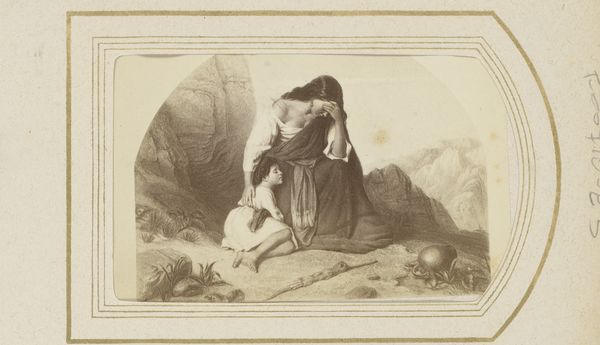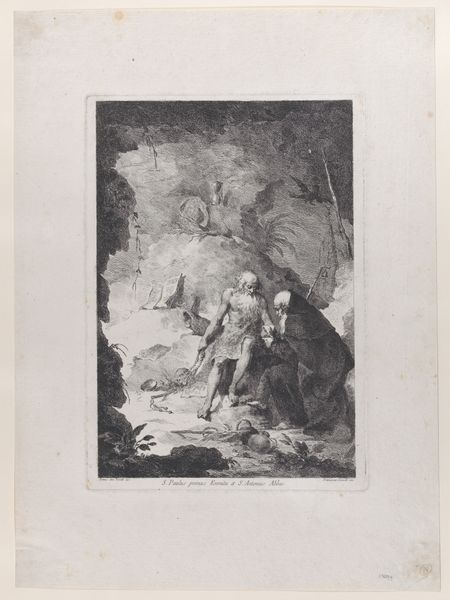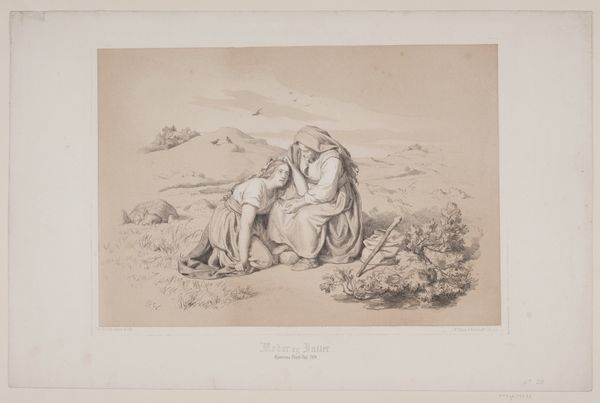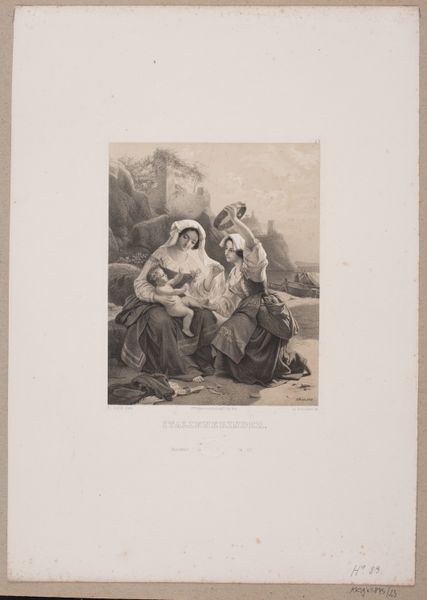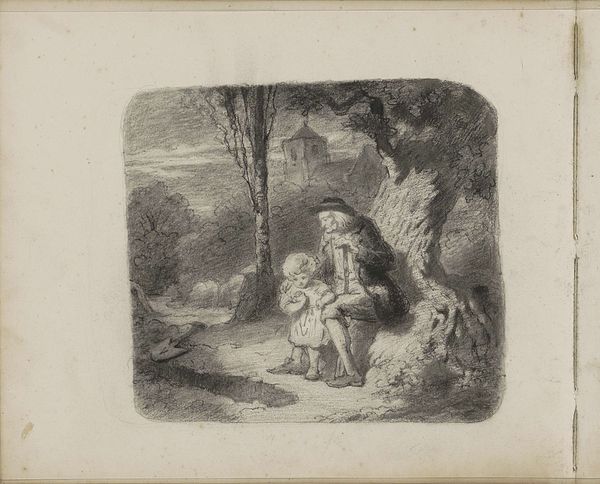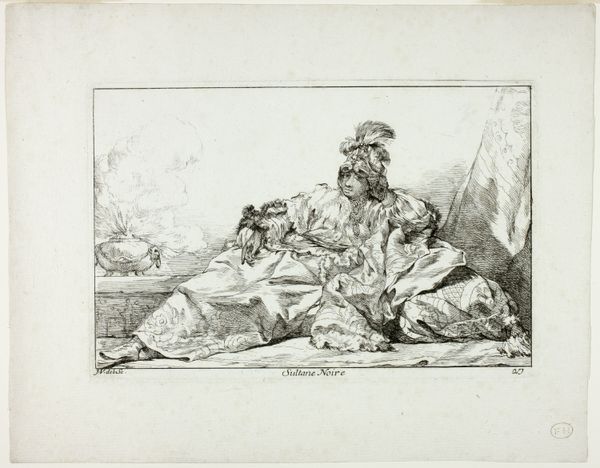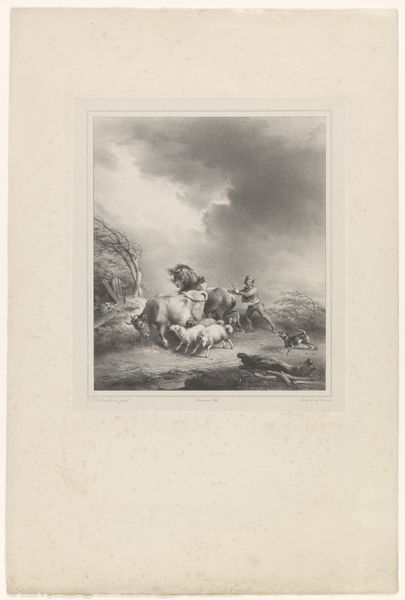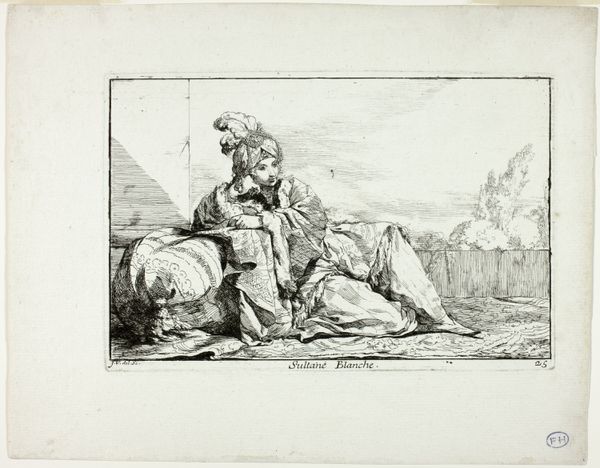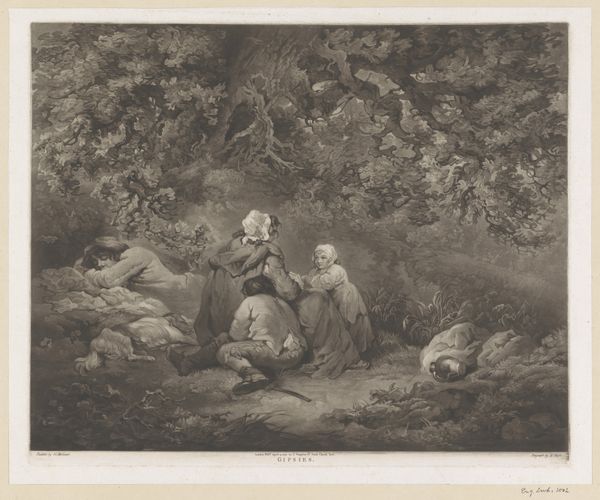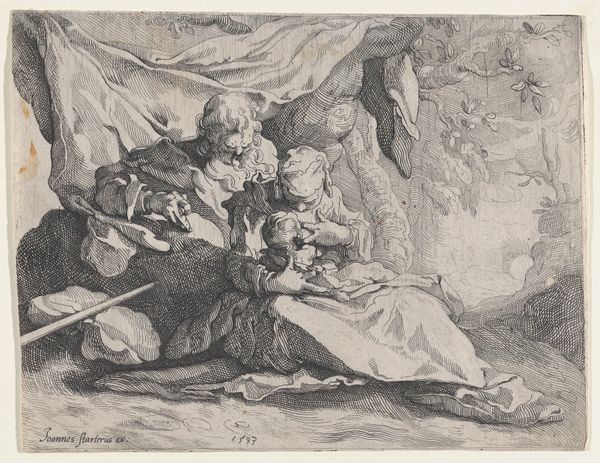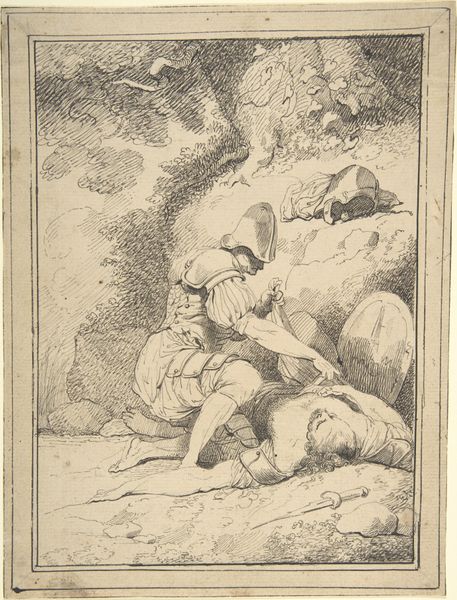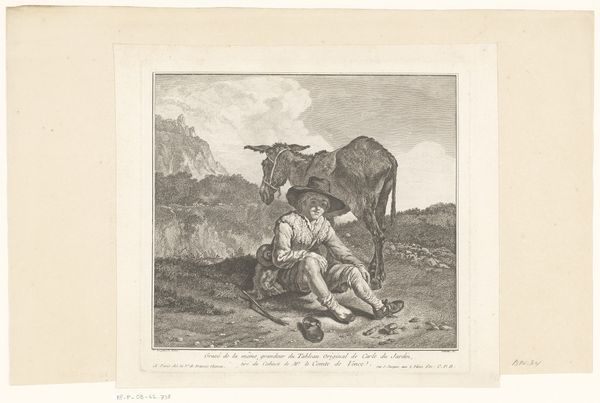
Shipwrecked Victim Thrown onto the Shore of Pourville 1817 - 1827
0:00
0:00
drawing, print, pencil, charcoal
#
drawing
# print
#
landscape
#
charcoal drawing
#
figuration
#
pencil drawing
#
romanticism
#
pencil
#
charcoal
#
history-painting
Dimensions: Sheet: 6 7/16 × 7 3/8 in. (16.3 × 18.8 cm)
Copyright: Public Domain
Curator: Here we have "Shipwrecked Victim Thrown onto the Shore of Pourville," created sometime between 1817 and 1827 by Horace Vernet. It's currently residing at the Metropolitan Museum of Art. Immediately striking is the use of charcoal and pencil – almost a whisper of grief across the paper. Editor: Yes, it hits you right in the gut, doesn't it? All those greys and the way the figures huddle together, it creates a sense of overwhelming sorrow. A shared tragedy laid bare on a windswept beach. Curator: Vernet certainly knew how to evoke emotion. What I find fascinating are the expressions – or rather, the obscured faces. Each figure seems to be lost in their private hell, rendered with just enough detail to ignite our imaginations. Look at the one kneeling...his face is buried in his hands. Editor: It speaks volumes, that concealment. He's hiding, perhaps from the unbearable reality or maybe from the survivor’s guilt itself. That covering becomes a potent symbol of mourning across different cultures and times. We use these kinds of body symbols even today. Curator: Absolutely, that action resonates powerfully. Vernet places him within this almost theatrical composition—a proscenium of sand and a backdrop of jagged rocks. Editor: Rocks like fate, unforgiving. And the sea, almost frothy with malevolence, spits out its victim at their feet. Tell me, Curator, what cultural echoes do you see at play in Vernet's narrative here? Curator: It’s difficult to dismiss Romanticism and history-painting traditions in the image, but for me, what's really captivating is this universal portrayal of human vulnerability, which transcends time. Vernet zeroes in on that precise point when hope crumbles, replaced by this raw, palpable grief. Editor: Precisely. It's a study in shared human experience. Despite the specifics of shipwreck, location, the symbolic impact—the psychological undercurrent of mourning, and even of witnessing someone else's grief is, as you say, quite universal. It serves as a solemn reflection on human loss. Curator: Yes, "Shipwrecked Victim" offers an unforgettable perspective, wouldn't you say? Editor: I agree, a very powerful visual metaphor.
Comments
No comments
Be the first to comment and join the conversation on the ultimate creative platform.
